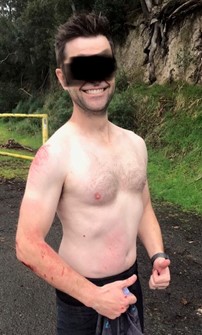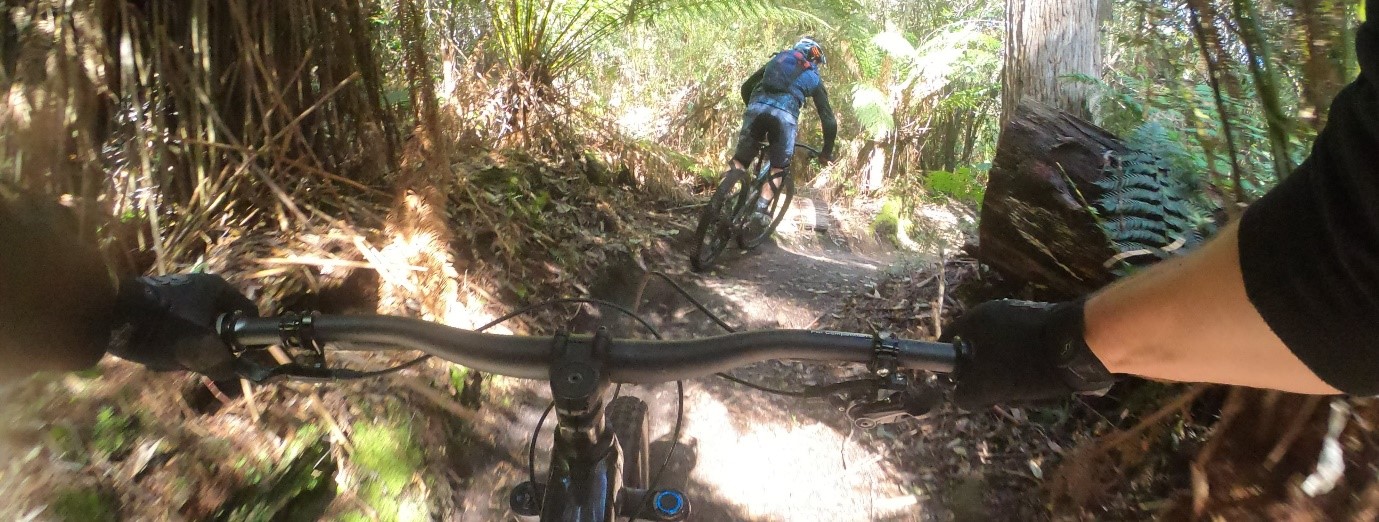As the various forms of mountain biking (MTB) have increased in participation in the last thirty years, with growing professionalism and the rise of the aggressive "weekend warrior" amateur rider, injuries both acute and chronic have increased and evolved as well. The evolution of mountain biking in all its forms, together with technological advances in bikes and training methods, has pushed the sport into the extreme and the wilderness, literally. A retrospective study showed that, despite the absence of motor vehicles that impacted street cyclists, the MTB rider displayed similar trauma patterns, except for spinal injuries. The off-roaders live up to their name of weekend warriors with increased numbers of MTB presentations during the weekend in comparison to the street cyclist.
As MTB goes further into the extremes of the environs, the wilderness practitioner must be aware of the potential injuries and the correlating kinematics leading to those injuries. MTB can be split into several sub-straits which impact the kinematics or the mechanism of injury.
Whether it be enduro, cross-country or downhill, kinematics of injury should always be considered when assessing potential injury patterns. It has become common practice for the MTB rider to wear a helmet and in some cases body armor. Despite this protection, injuries to the mandible, orbit, and zygomaxillary complex are common together with head, neck, and spinal injury being prevalent. It is apparent that MTB presents more frequently with spinal insult than other forms of cycling. In many of the studies that look at MTB injuries, it appears that around 10% of injuries and a significant cause of hospital admission are due to head and spinal trauma.
The ubiquity of injury to head and neck reflects a common mechanism of the rider being projected over the handlebars due to ground irregularities and riding downhill at speed and contacting the ground or other natural features. This mechanism is reported as common in all age groups and skill levels and results in further injury patterns, both in conjunction with and apart from the head and spinal injury.
Upper limbs and the clavicle take a beating in both low mechanism and high mechanism falls in the MTB rider. Injuries to the upper limbs range from minor abrasions and repetitive strains from vibrations and handling on rough terrain to fractures and soft tissue injury. In a retrospective review of 898 cases from the Whistler Mountain Bike Park, upper limb fractures accounted for about 75% of treated injuries at the at the Whistler Health Clinic in 2009. Looking at the “serious” side of MTB racing, medical results captured from the Trans-Sylvania Mountain Bike Epic race found that the injury pattern lent toward minor abrasions of the upper limbs. Interestingly, it was noted that illness of the participants was the major (3/4) cause of withdrawal and 65% of presentations to the medical staff at the event. It was concluded that the incidence of illness and injury was similar to what can be seen in other long-distance, long time frame events.

Common upper limb abrasions
Like all long-distance, wilderness-based events, the MTB competitor and regular social rider – particularly when they are looking to join an enduro or cross-country event – often succumb to repetitive injury and illness from inefficient training techniques and changes in diet for events versus training and day-to-day working life.
Apart from diet changes and catching other communicable diseases from wilderness conditions, there is the inevitable trauma to and overuse injury of the torso. This includes back pain and irritation from repetitive strain or a poor-fitting bike as well as the approximately 5% of injuries that are targeted in the abdomen from traumatic cause. This can be in the form of puncture wounds from handlebar points or blunt trauma from striking the bars as the rider is ejected over the handlebars.
The repetitive nature of the lower leg action further leads to knee as well as lower lumbar spine injury. A survey of German, Austrian and Swiss professional riders identified that the back injury issue was more prevalent in the pre- and post-season when training is at its heaviest or the toll of enduro racing has worn the rider out. Also noted was the need to conduct proper and regular preventative stretching and concurrent strength and conditioning training to combat repetitive injury. Ironically, despite the regular use of knee pads on the trails, the studies surveyed for this article found that traumatic knee injury is very low in occurrence in the scheme of MTB injury (outside of simple abrasions and repetitive injury). This may be because of the use of knee pads or perhaps because the kinematics of the MTB collision or fall don’t lend themselves to impacting the knee joint. Either way, there is no evidence supporting discontinuing wearing protective equipment.
So, what does the weekend warrior, rider, or dedicated first responder carry to cover the types of injury we see on the trails? This will vary considerably depending on the role you play, the area in which you ride, and other logistical factors that contribute to the weights and measures associated with wilderness medicine and riding to the scene.
If you are the weekend warrior on your local trails, venturing far out enough that an almond latte is accessible on the ride home, your first aid kit may fit into your tool kit. Include a bit of gaffer tape and some paracetamol (Tylenol for the US cohort), plus maybe a triangle bandage for the shoulder dislocation or fractured clavicle. For the long-distance riders in mountainous terrain that is matched only by its remoteness, a bit more could be considered if you are the one responsible for the group or event. Then there is the dedicated first responder or service provider who attends MTB events and can establish a small facility.
The majority of surveys and studies reviewed for this article were conducted primarily to identify the needs of the responder or care facilitator in the event of injury or illness at events or MTB trail hubs. There are a number of good guides to general first aid kits and each responder or agency has their go-to primary response kit. Still, it is generally important to look at the statistics and understand the kinematics and the environment in which you are operating to form your own go-to response material and logistics plan.
